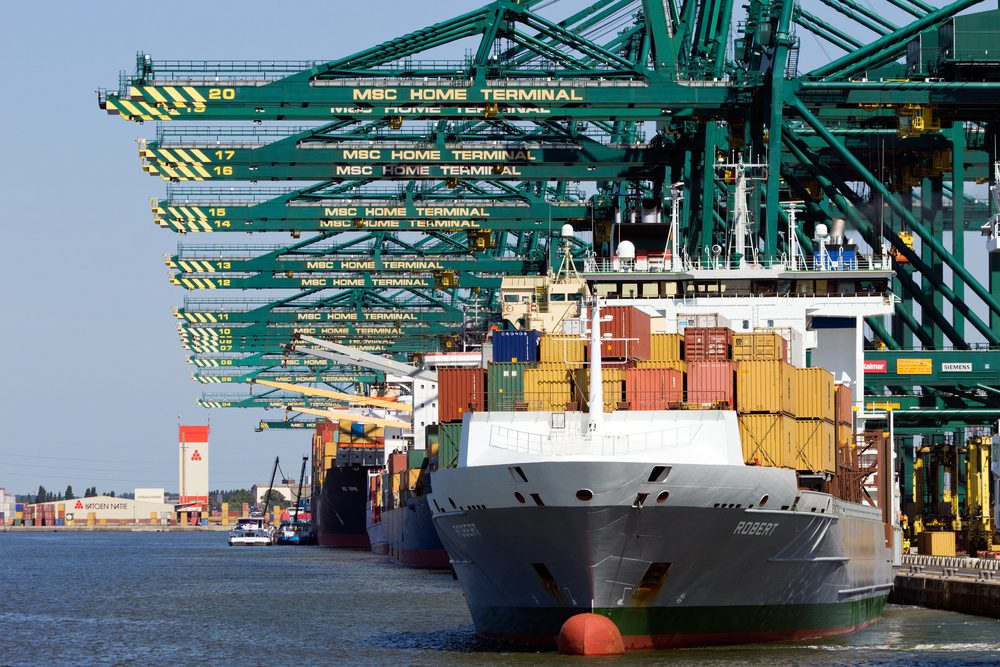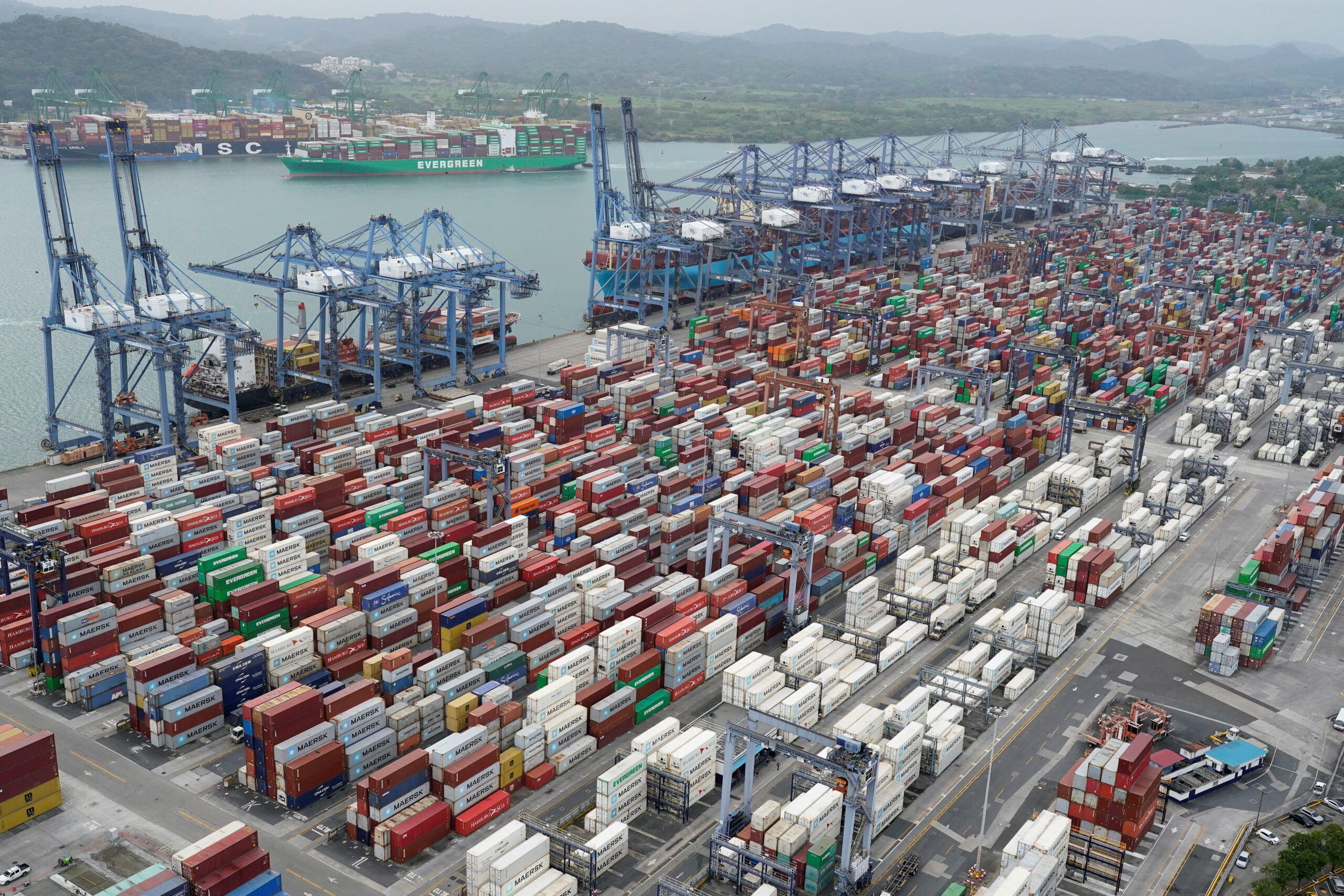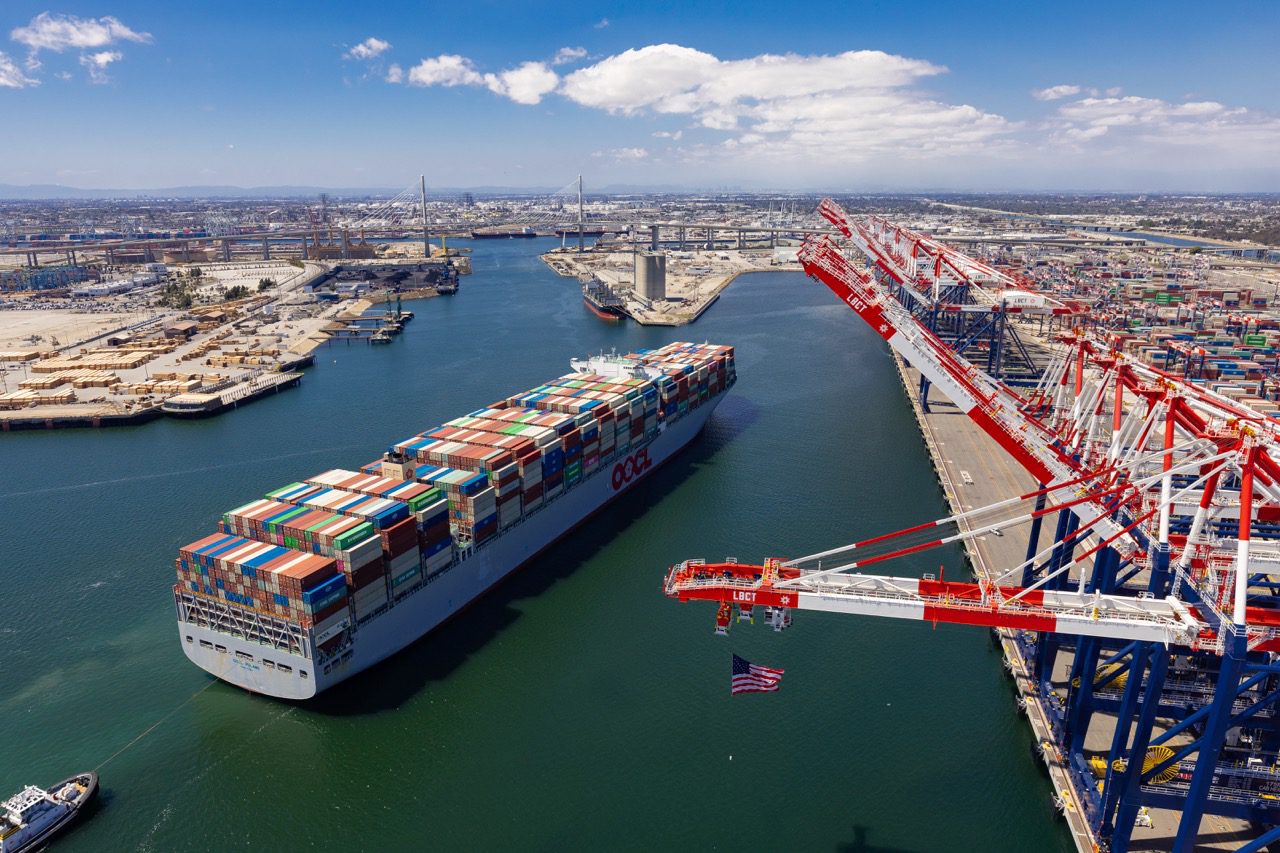File Photo: Port of Antwerp. VanderWolf Images / Shutterstock.com
By Mike Wackett (The Loadstar) – Blanked sailings and network changes resulted in a mixed bag of throughput results at North Europe’s top two container hubs, Rotterdam and Antwerp, in the first half of the year.
With the three east-west carrier alliances cancelling more than 20% of sailings from Asia to Europe at the peak of the Covid-19 lockdowns in Q2, the carriers reshuffled their pack of retained loops to offer shippers alternative loaders.
While all the container ports in the Hamburg-Le Havre range would have expected a slump in box volumes as a consequence of the blanked sailings, the Belgian port of Antwerp and its smaller compatriot at Zeebrugge have emerged as comparative ‘winners’.
Europe’s biggest container hub, Rotterdam, recorded a 7% drop in throughput in H1, compared with the first six months of 2019, to 7m teu, and fewer importsled to a knock-on decline in empty container repositioning to Asia.
Port chief executive Allard Castelein said the pandemic had had a “huge impact”.
However, at Benelux neighbour Antwerp, the container terminals recorded a 0.4% increase in volumes, to 5.85m teu, compared with the previous year.
“The number of calls made by vessels decreased, but this was compensated by a higher average volume per vessel and additional calls,” said the port.
Antwerp was also the chief benefactor of social unrest at French ports that spilled over into the early part of the year, resulting in vessel diversions from Le Havre to Antwerp and, to a lesser extent, Rotterdam.
Antwerp is also cautiously optimistic for the third quarter, saying although it is “still expecting blank sailings”, it was now seeing “the first signs of a recovery”.
According to Alphaliner, the first-half throughput numbers for the two ports “show different levels of exposure to the Covid-19-related volume slump”.
“Antwerp managed to maintain healthy volumes, as the port profited from labour action at Le Havre in January and inducement calls of the 2M alliance Far East-Europe services,” noted the consultant. “It scored another win in April, when the CMA CGM-operated Ocean Alliance loop NEU5/FAL3 dropped Hamburg in favour of Antwerp.”
At Zeebrugge, “despite a couple of blank sailings”, container traffic continued its growth with a 14% increase, in terms of deadweight, to 8.6m tonnes in H1, compared with 2019.
Although the port did not release teu statistics for Q2, in Q1 the port recorded an increase of 11.1% in container throughput, to 439,846 teu for 4.4m tonnes.
Following Cosco’s acquisition of the port’s CSP Zeebrugge box terminal in 2017, the facility has been included in the rotation of two Ocean Alliance services from the second quarter of 2019.
Hamburg, north Europe’s third-largest container hub, has yet to publish its Q2 and H1 throughput numbers, although for Q1, volumes were down 6.6% to 2.2m teu.
Alphaliner said that, “as a prime import port from China”, Hamburg “is expected to have suffered notably from Covid-19-related fallout”.
The Loadstar is fast becoming known at the highest levels of logistics and supply chain management as one of the best sources of influential analysis and commentary.
Check them out at TheLoadstar.co.uk, or find them on Facebook and Twitter.

 Join The Club
Join The Club











